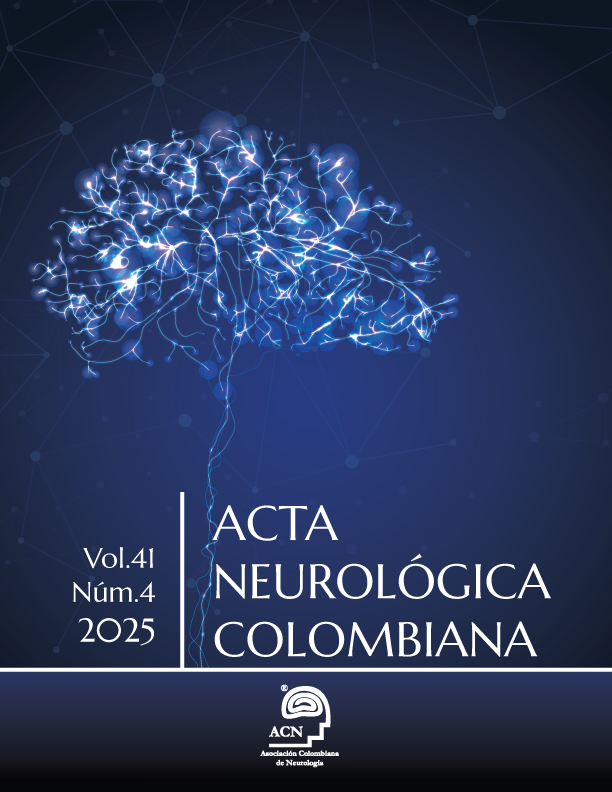Abstract
Background: The right temporal variant of semantic dementia (rSD) is an anatomic variant characterized by a radiological pattern of asymmetric anterior temporal atrophy, with predominance of the right lobe. It constitutes a syndrome with primary progressive aphasia with differential cognitive and behavioral symptoms, the key manifestations being prosopagnosia, topographic agnosia, and impairment of socio-emotional functioning.
Case presentation: We describe the case of a 59-year-old man who developed a progressive cognitive decline in a six-year period. The first clinical manifestation was semantic anomia and difficulty recognizing objects; he later developed prosopagnosia, topographic agnosia, and progressive deterioration of episodic memory. These cognitive symptoms were accompanied by behavioral changes. Brain magnetic resonance imaging revealed asymmetric atrophy in the temporal poles, predominantly in the right hippocampal formations.
Discussion: The exposed case illustrates the clinical presentation of the right temporal variant of semantic dementia and how it correlates with specific neuroimaging findings. This correlation highlights the role of the right temporal lobe for developing multimodal concepts. Neuropathological and genetic characterization have been proposed as novel diagnostic approaches that might help distinguish right temporal variant of semantic dementia from other variants.
Conclusions: Although the right temporal variant of semantic dementia presents distinctive clinical manifestations, clinical diagnosis alone may be challenging due to overlapping features with other variants of frontotemporal dementia (FTD), highlighting the limitations faced in settings with little access to neuropathological and genetic evaluations and the need for more comprehensive characterization of clinical diagnostic criteria through longitudinal studies.
References
Elahi FM, Miller BL. A clinicopathological approach to the diagnosis of dementia. Nat Rev Neurol. 2017;13(8):457-476. https://doi.org/10.1038/nrneurol.2017.96
Lashley T, Rohrer JD, Mead S, Revesz T. Review: An update on clinical, genetic and pathological aspects of frontotemporal lobar degenerations. Neuropathol Appl Neurobiol. 2015;41(7):858–881. https://doi.org/10.1111/nan.12250
Hodges JR, Patterson K. Semantic dementia: A unique clinicopathological syndrome. Lancet Neurol. 2007;6(11):1004–1014. https://doi.org/10.1016/S1474-4422(07)70266-1
Botha H, Josephs KA. Primary progressive aphasias and apraxia of speech. Continuum (Minneap Minn). 2019;25(1):101–127. https://doi.org/10.1212/CON.0000000000000699
Montembeault M, Brambati SM, Gorno-Tempini ML, Migliaccio R. Clinical, anatomical, and pathological features in the three variants of primary progressive aphasia: A review. Front Neurol. 2018;9(2018):692. https://doi.org/10.3389/fneur.2018.00692
Kumfor F, Landin-Romero R, Devenney E, Hutchings R, Grasso R, Hodges JR, et al. On the right side? A longitudinal study of left- versus right-lateralized semantic dementia. Brain. 2016 Mar;139(3):986–998. https://doi.org/10.1093/brain/awv387
Josephs KA, Whitwell JL, Knopman DS, Boeve BF, Vemuri P, Senjem ML, et al. Two distinct subtypes of right temporal variant frontotemporal dementia. Neurology. 2009;73(18):1443–1450. https://doi.org/10.1212/WNL.0b013e3181bf9945
Younes K, Borghesani V, Montembeault M, Spina S, Mandelli ML, Welch AE, et al. Right temporal degeneration and socioemotional semantics: Semantic behavioural variant frontotemporal dementia. Brain. 2022;145(11):4080–4096. https://doi.org/10.1093/brain/awac217
González-Caballero G, Abellán-Miralles I, Sáenz-Sanjuan MJ. Right temporal lobe variant of frontotemporal dementia. J Clin Neurosci. 2015;22(7):1139–1143. https://doi.org/10.1016/j.jocn.2014.12.022
Chan D, Anderson V, Pijnenburg Y, Whitwell J, Barnes J, Scahill R, et al. The clinical profile of right temporal lobe atrophy. Brain. 2009;132(5):1287–1298. https://doi.org/10.1093/brain/awp037
Erkoyun HU, Groot C, Heilbron R, Nelissen A, van Rossum J, Jutten R, et al. A clinical-radiological framework of the right temporal variant of frontotemporal dementia. Brain. 2020;143(9):2831–2843. https://doi.org/10.1093/brain/awaa225
Kamminga J, Kumfor F, Burrell JR, Piguet O, Hodges JR, Irish M. Differentiating between right-lateralised semantic dementia and behavioural-variant frontotemporal dementia: An examination of clinical characteristics and emotion processing. J Neurol Neurosurg Psychiatry. 2015;86(10):1082–1088. https://doi.org/10.1136/jnnp-2014-309120
Koros C, Beratis I, Matsi S, Bougea A, Bonakis A, Papatriantafyllou I, et al. Prosopagnosia, other specific cognitive deficits, and behavioral symptoms: Comparison between right temporal and behavioral variant of frontotemporal dementia. Vis. 2022;6(4):75. https://doi.org/10.3390/vision6040075
Campos DF, Rocca AR, Caixeta LF. Right temporal lobe variant of frontotemporal dementia: Systematic review. Alzheimer Dis Assoc Disord. 2022;36(3):272–279. https://doi.org/10.1097/WAD.0000000000000511
Chan CK, Soldan A, Pettigrew C, Wang M-C, Wang J, Albert MS, et al. Depressive symptoms in relation to clinical symptom onset of mild cognitive impairment. Int Psychogeriatrics. 2019 Apr;31(4):561–569. https://doi.org/10.1017/S1041610218001138
Omar R, Rohrer JD, Hailstone JC, Warren JD. Structural neuroanatomy of face processing in frontotemporal lobar degeneration. J Neurol Neurosurg Psychiatry. 2011;82(12):1341–1343. https://doi.org/10.1136/jnnp.2010.227983
Albonico A, Barton J. Progress in perceptual research: The case of prosopagnosia. F1000Research. 2019;8:765. https://doi.org/10.12688/f1000research.18492.1
Barton J, Corrow S, Dalrymple K. Prosopagnosia: Current perspectives. Eye Brain. 2016;8:165–175. https://doi.org/10.2147/EB.S92838
Ramírez L, Velilla L, Quiroz Y, Lopera F, Giraldo M. Demencia frontotemporal: variante temporal derecha, reporte de dos casos. Acta Neurol Colomb. 2016;32(1):54–60. https://doi.org/10.22379/2422402276

This work is licensed under a Creative Commons Attribution-NonCommercial-NoDerivatives 4.0 International License.


